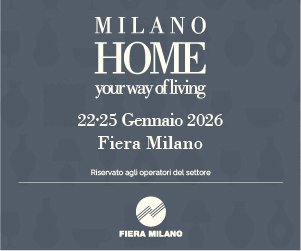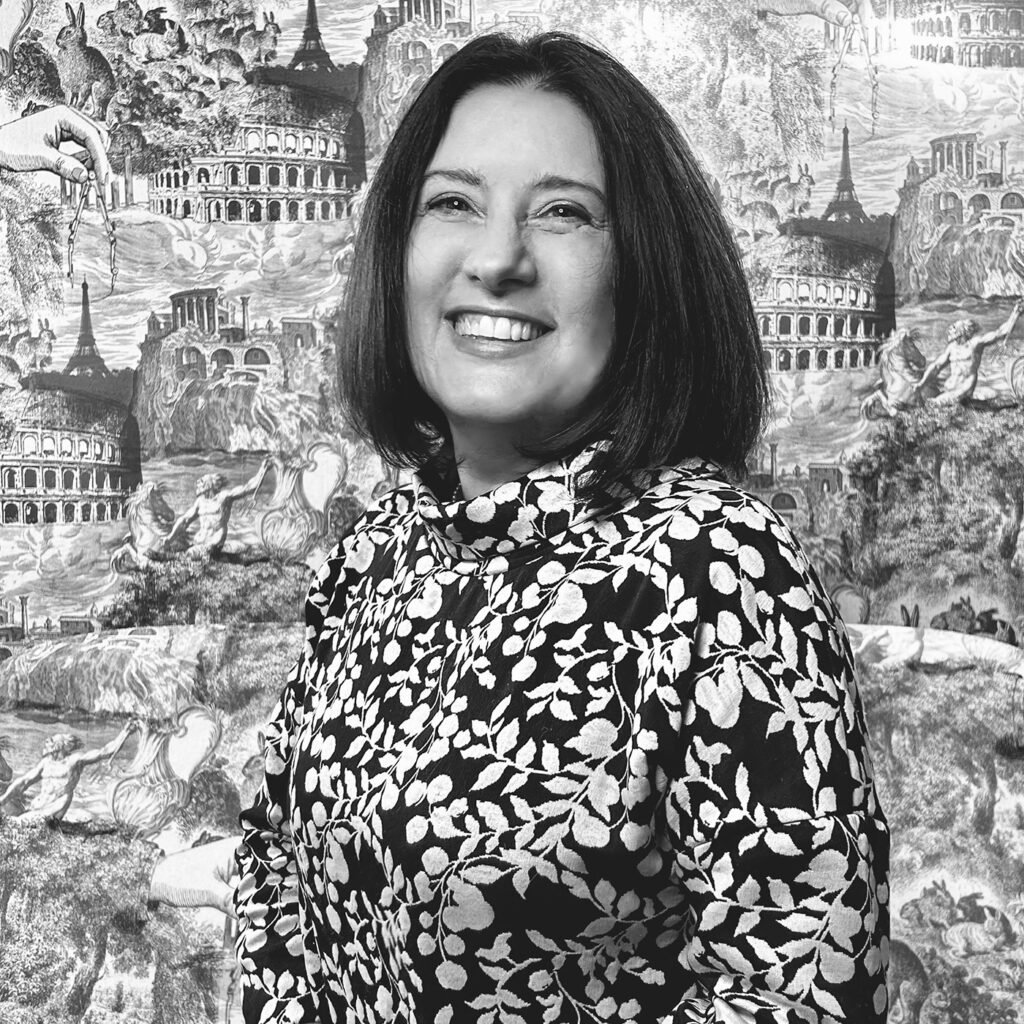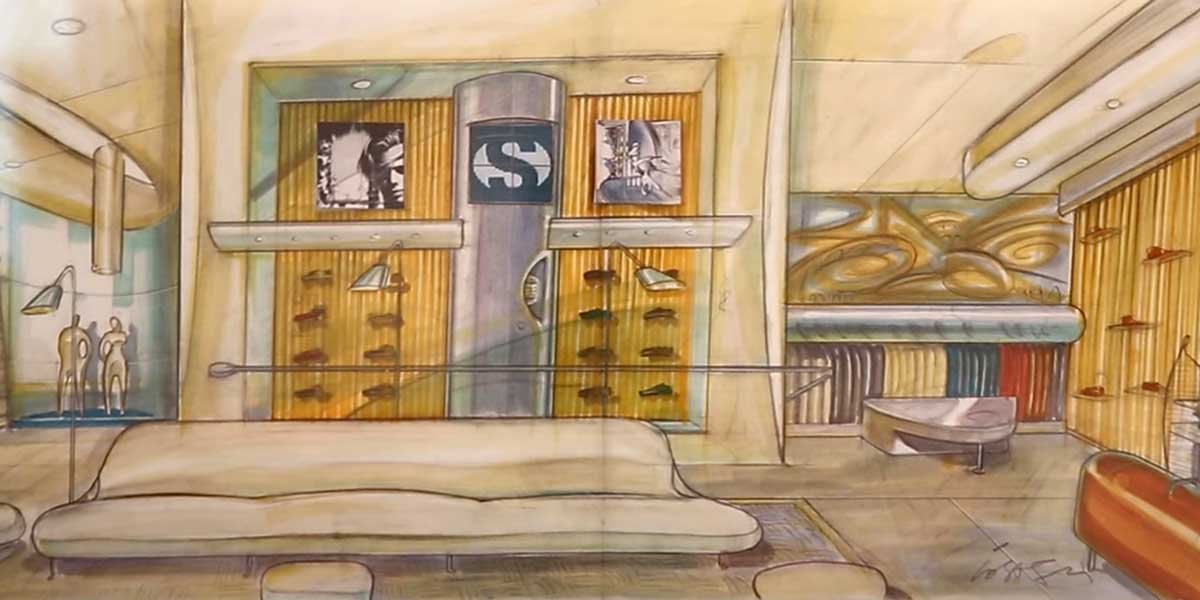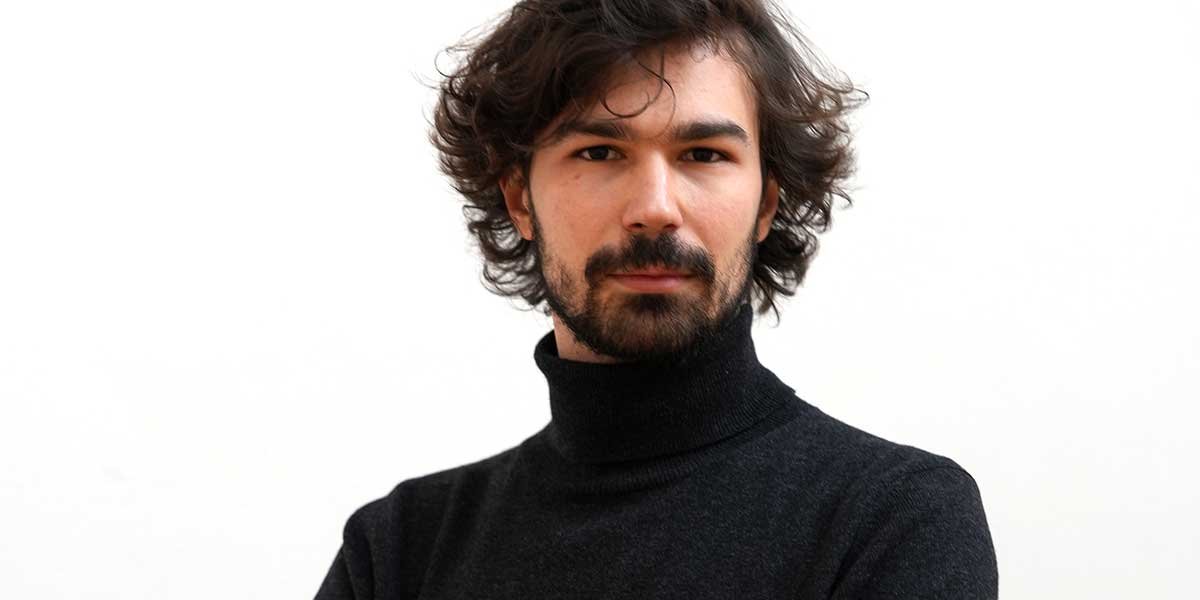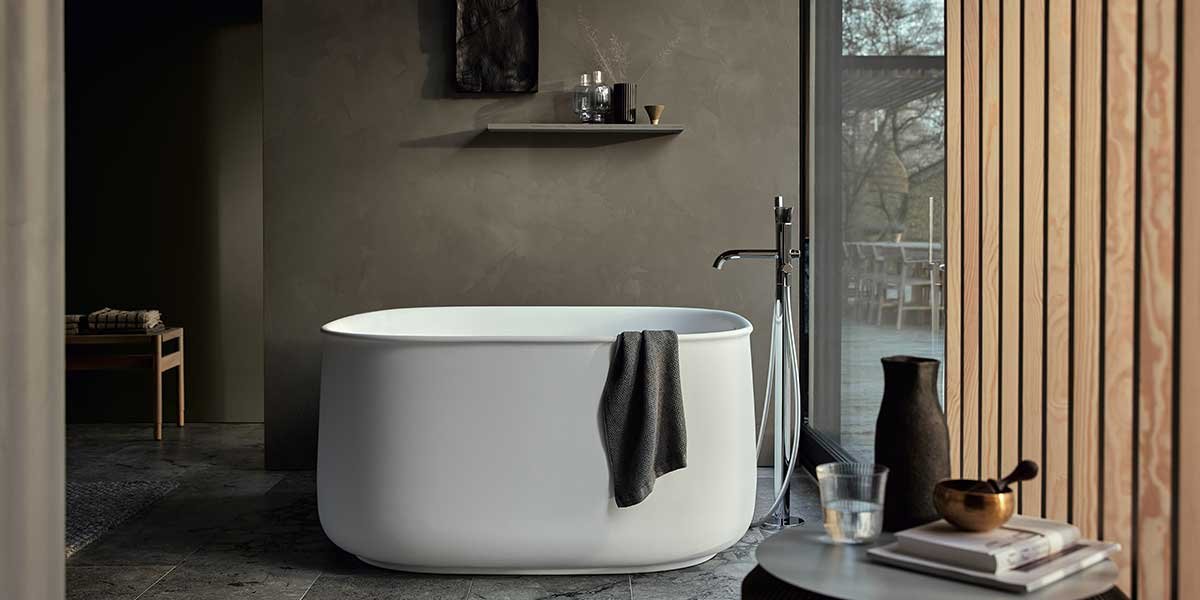“I love breaking down the boundaries between what is considered art and what is commonly thought of as design or product.”
He is brilliant, creative, irreverent. A romantic maximalist who literally frees design and interiors from the prevailing minimalism and the pervasive “Ikea mood” of recent decades. One might say: finally! His name is Luke Edward Hall, he’s English, and he represents a masterful synthesis of a collector, an artist, a designer, and… a dandy. Born on August 13, 1989, the eldest of four siblings, into a family with an accountant father and a stay-at-home mother.
Inspirations, notes, impressions. A detail from a wall in Luke Edward Hall’s country house in the Cotswolds, Gloucestershire.
Inspirations notes impressions designer Luke Edward Hall.

He grew up in a 1980s house in Basingstoke, about an hour from London, “surrounded by lots of concrete, roundabouts, and bypasses. I believe my thirst for romance was fueled by the gray horizon before me. I used to retreat to my room, creating somewhat extreme universes: purple walls, shelves dotted with Lego and Star Wars spaceships, drawings… then a small job brought me into contact with the National Trust, at The Vyne. And that’s when the doors to another fascinating universe opened for me: the past.“. His passion for colors, art, and décor immediately emerged, directing his education, which saw him enroll at Central Saint Martin’s School in London, where he specialized in fashion design.
Luke Edward Hall’s work desk. Detail.
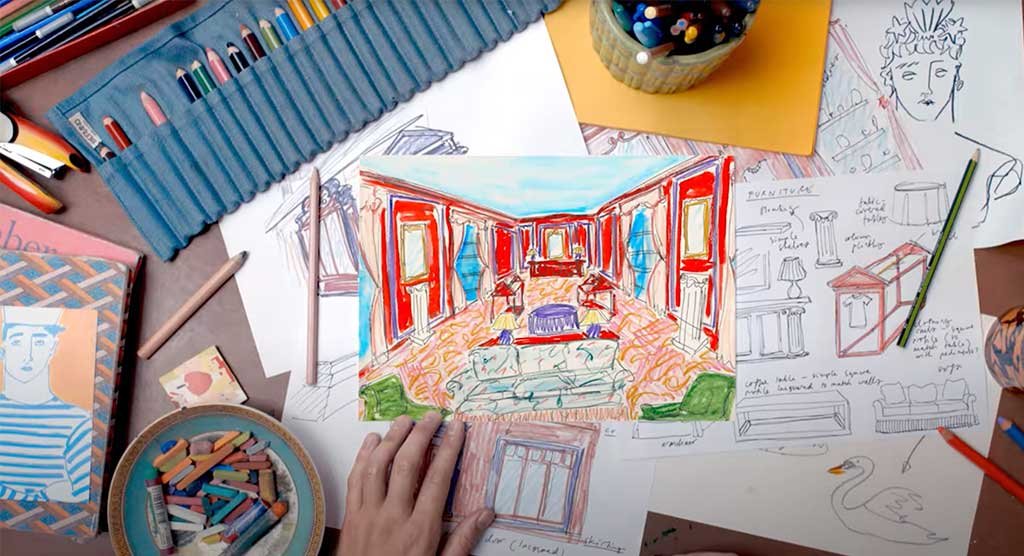
He began working for a well-known clothing company right after finishing his studies. It was 2012. After a few internships and the opportunity to work with an interior designer (his current life partner, Duncan Campbell) who recognized his talent, he became independent in 2015 by opening his own studio.
What makes this young artist special and unique is his audacious use of color, with references to the ‘60s and ‘70s between pop and post-modernism. But even more surprising is his innate ability to blend modernity and history, creating a playful, optimistic synthesis and erasing boundaries between disciplines. Fashion, art, design, and interiors are a natural consequence of one another and vice versa.
The café. Photo courtesy of Hotel Les Deux Gares.

This elusiveness is well represented by his projects, which remain deliberately “unfinished”. That is, open to further layers and mutations. In this sense, he is a product of his time, navigating between the internet, ubiquity, and change. “When combining, for example, colors and furnishings from different eras, you can’t work quickly. You need to observe, modify, and try various solutions. In any case, nothing can remain frozen. It would lose its life.”
Luke Edward Hall’s country house in the Cotswolds, featured in the book “A Kind of Magic/The Kaleidoscopic World of Luke Edward Hall,” Vendome Press.

At first glance, his works evoke those of David Hockney (unsurprisingly, he is a fan), but also of Jean Cocteau, Picasso, and even Gio Ponti in his use of a fluid and lyrical graphic style, which he applies to porcelain surfaces, wallpapers, or fabric prints.
Detail from the collection “Il Viaggio di Nettuno.” Ginori 1735, catalog photo.
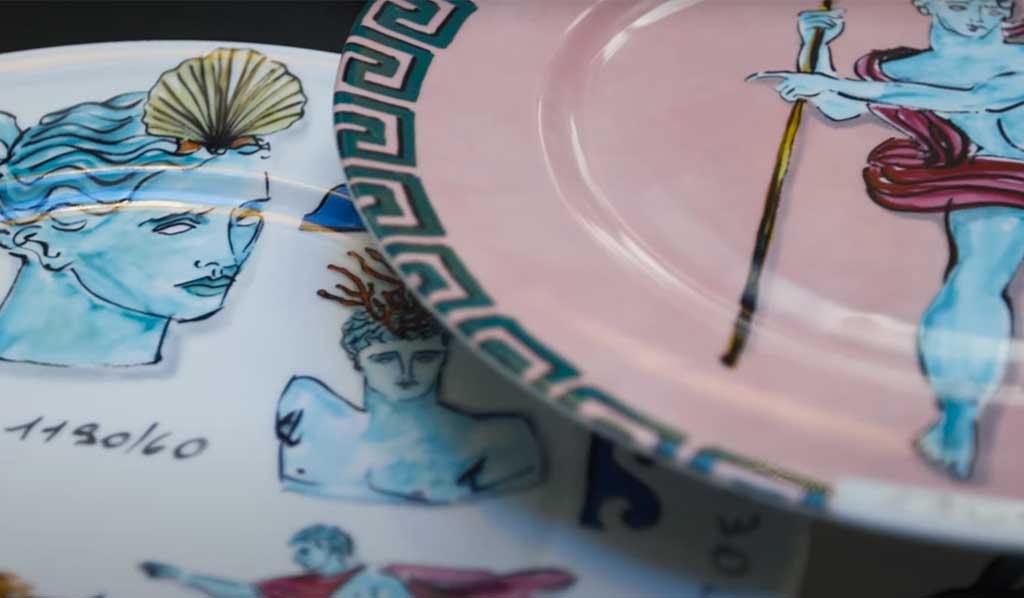
In interior design and his unconventional use of color with unusual combinations, he draws inspiration from the great David Hicks, as well as John Fowler, Dorothy Draper, and masters like Cecil Beaton, Duncan Grant, Oliver Messel, and Rex Whistler from the Bloomsbury Group, who were able to move freely across all artistic fields with absolute and natural mastery. This mastery is also a stylistic hallmark of Luke himself. A tightrope walker who balances between kitsch and beauty, managing to blur the line between the two worlds.
Details of the relaxation area, Hotel Les Deux Gares, Paris. Photo courtesy of Hotel Les Deux Gares.

He loves collecting, and his small London house, in the lively and alternative neighborhood of Camden, is an explosion of objects, furniture, graphics, photos, and paintings from diverse origins, all mixed in an apparent randomness. The same compulsive passion can be found in his retreat in the countryside in the Cotswolds, Gloucestershire.
Lounge area detail, Hotel Les Deux Gares, Paris. Photo courtesy of Hotel Les Deux Gares.
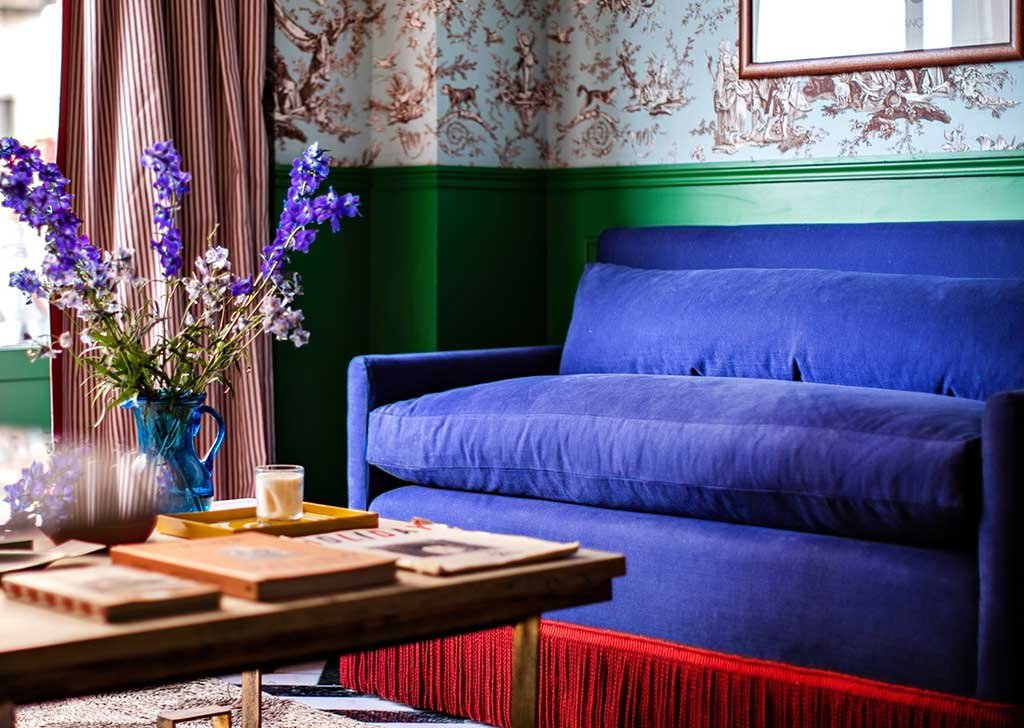
His passion for travel is also evident, which he approaches with the educational spirit of the 19th-century Grand Tour. Here, Italy and Greece hold a central place. Venice, Rome, as well as Florence, Taormina, and Naples are places close to his heart, from which he draws elements that he transposes into his work. He has a classical imagination that manifests itself in a taste that straddles the worldly and the refined. His interest in mythology is evident, but he gives it a modern interpretation, where classical tradition transforms and is recognized in stylized motifs, used with great ease without ever falling into banality.
“ Design can’t be too serious. It becomes boring. A pinch of fun is necessary, a bit of eccentricity doesn’t hurt. The key is not to overdo it.”. His collaboration with Ginori1735, for which he designed and created the decorations for the porcelain collections “Profumi Luchino” and “Il Viaggio di Nettuno,” is exemplary.
Ginori 1735, “Il Viaggio di Nettuno” collection. Catalog photo.
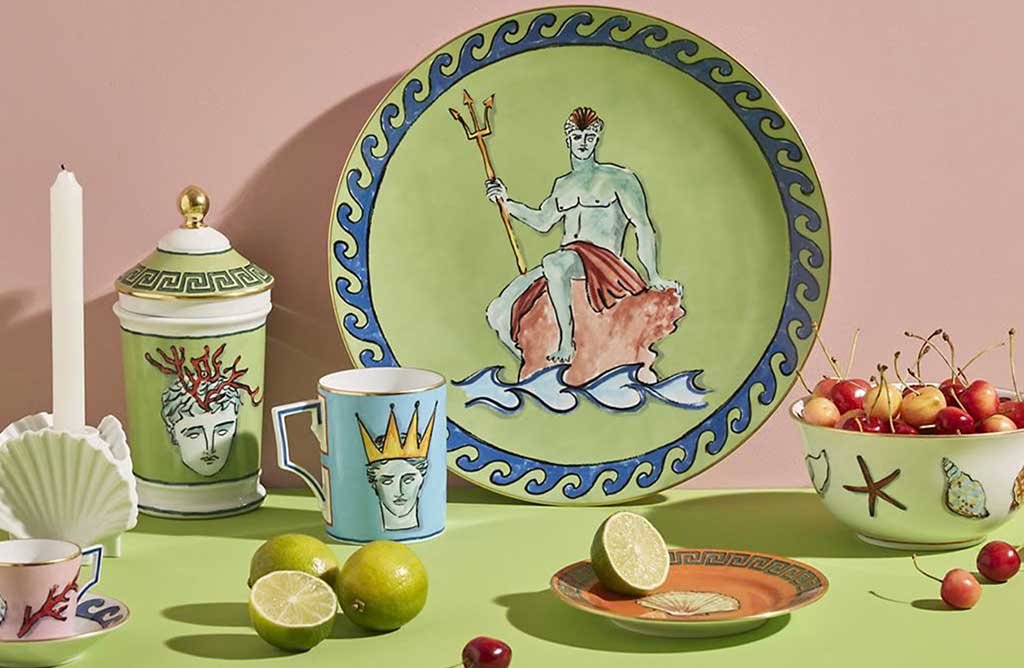
Let’s move on to some of his other works, which, more than any description, capture his world. Among them is Les Deux Gares, a hotel and bistro with thirty-three rooms located in the 10th arrondissement of Paris. A perfect mash-up between French effervescence and English aloofness.
“I wanted to create a place rich in color, layering objects and patterns. Something that placed the hotel between a classic luxury hotel and an eclectic, free and ironic accommodation.” Not least the daring mix of textures, colors and furnishings with a Central European flavor (but not too much) reserved for the prestigious Kulm Hotel in Saint Moritz.
On the left, Lorenzo Rubelli, Parade collection “Diana and Eros”, wallpaper. Photo from catalogue; on the right, Lorenzo Rubelli, Return to Arcadia collection, furnishing fabrics. Photo from catalogue.
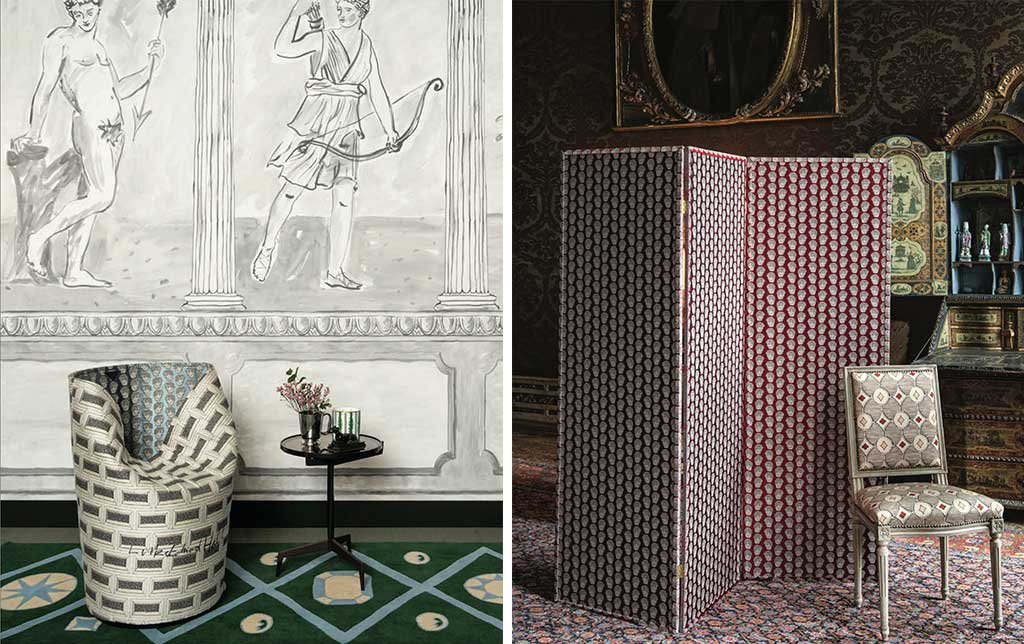
He has collaborated with several companies and institutions, including Burberry, Lavin, Christie’s, the Royal Academy of Arts, Svenskt Tenn, Diptyque, Habitat and V&A. And since 2022 he has been leading Chateau Orlando, his clothing and homewares brand.
As an artist, Luke exhibits his works in London and collaborates as a journalist with various international magazines, including Cabana, House & Garden, Pleasure Garden and since 2019 he has been a columnist for the Financial Times. What can we say, finally, about your collections of fabrics and wallpapers designed for the Venetian manufacturer Lorenzo Rubelli? Browse the Return to Arcadia and Parade catalogs. The dream came true.
Lorenzo Rubelli, Return to Arcadia collection, Furnishing fabrics/Jaquard Wobble Grid. Photo from catalogue.
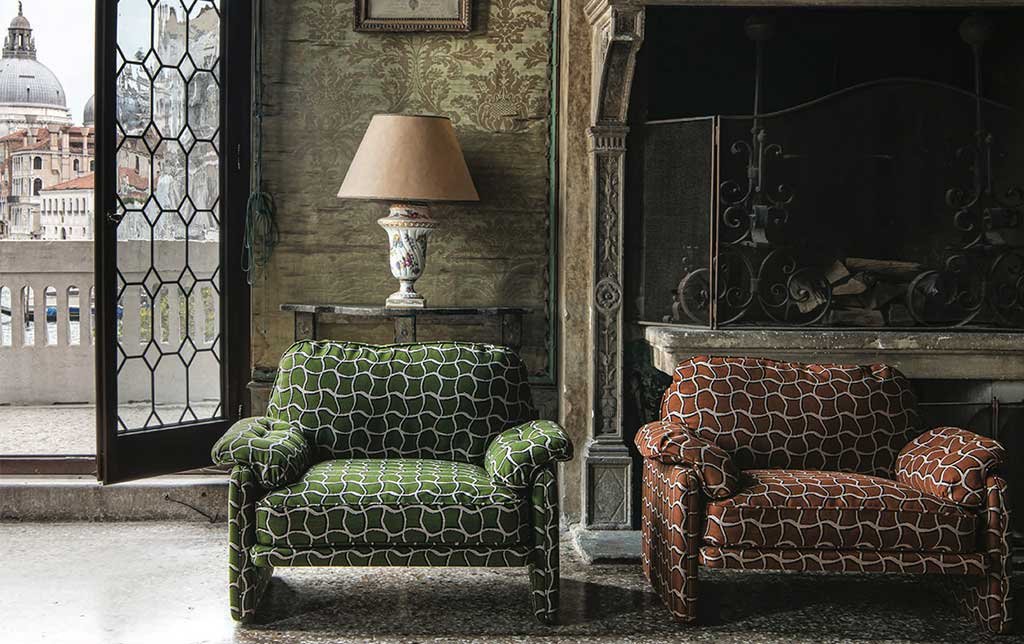
On the cover, Luke Edward Hall. Image from the Return to Arcadia catalogue, Lorenzo Rubelli.





